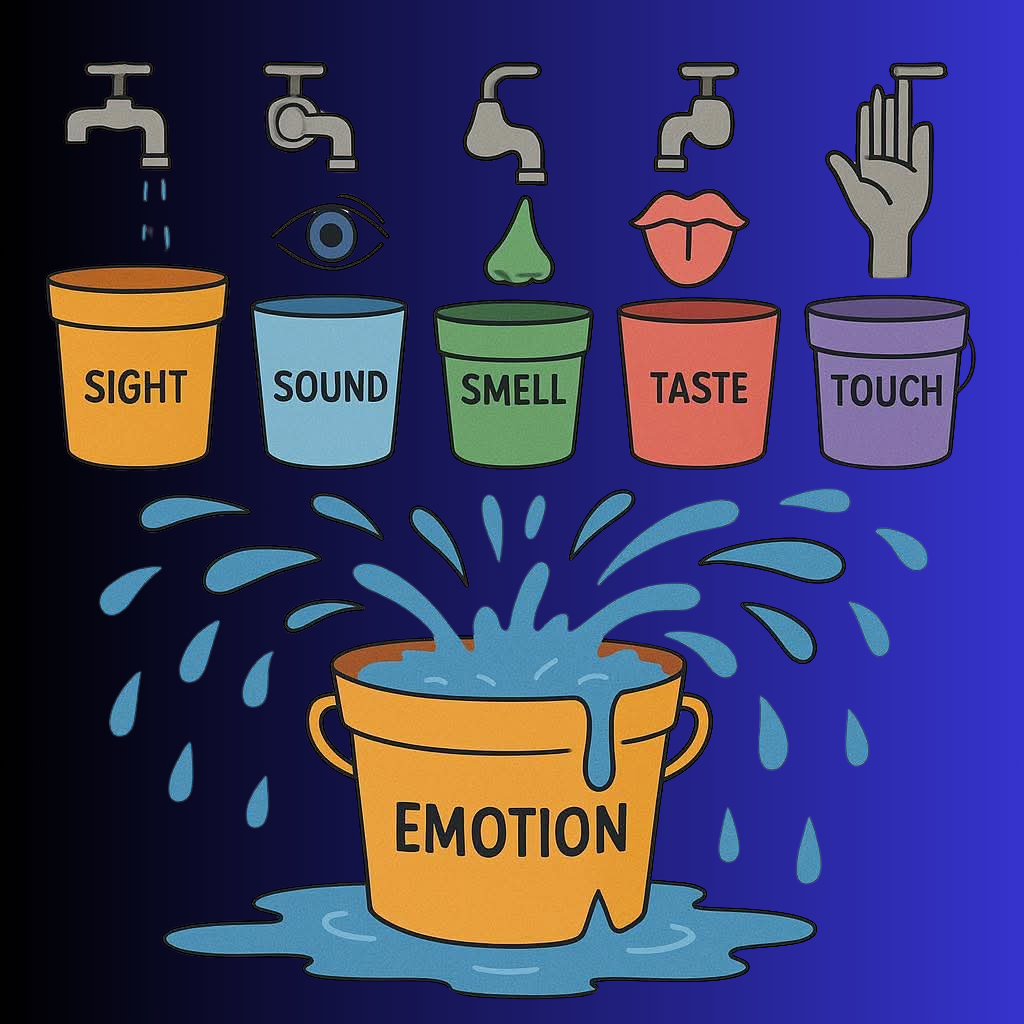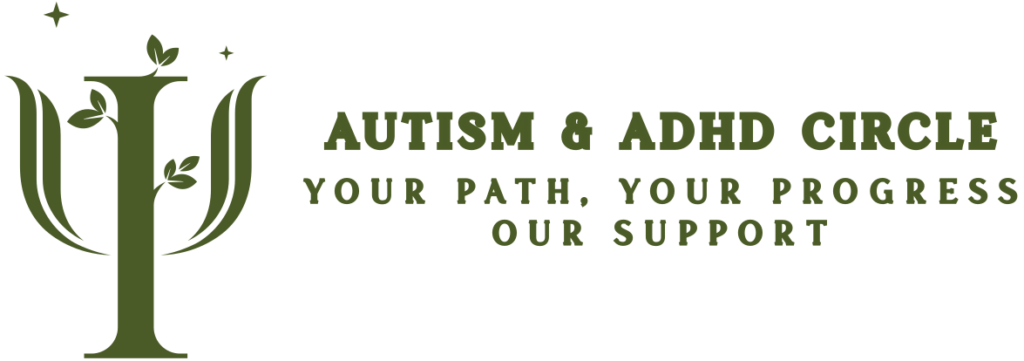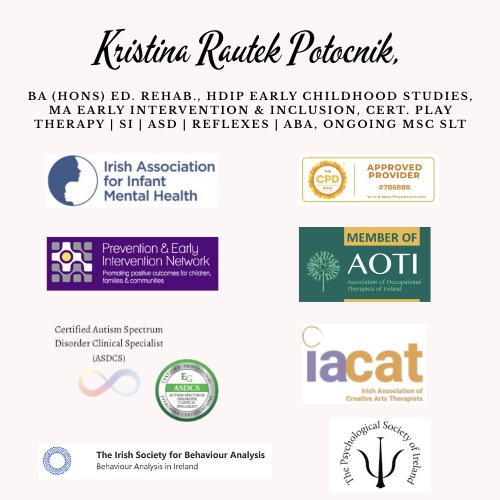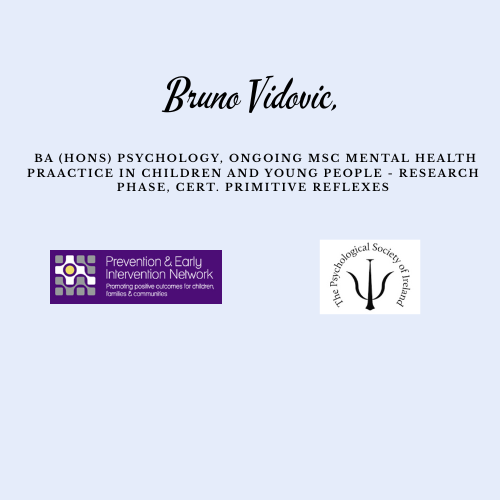The Six Bucket Model – Understanding Dysregulation from the Inside Out

Author: Kristina Rautek Potocnik, BA (Hons) Ed. Rehab., HDip Early Childhood Studies, MA Early Intervention & Inclusion, Cert. Play Therapy | SI | ASD | Reflexes, ongoing MSc SLT
After immersing myself in the voices of autistic individuals who are non- or unreliably speaking—particularly through books written by them rather than about them—a pattern began to emerge. Across different stories and perspectives, one truth echoed again and again: behavior is communication, dysregulation is not defiance, and sensory experience is the missing lens we so often overlook.
The Six Bucket Model offers a powerful way to visualise what’s happening beneath the surface. It serves as a metaphor to help us understand regulation—not as something that needs to be imposed from the outside, but as something deeply connected to how a person experiences the world, especially when spoken language is limited or absent. It invites us to listen differently, to observe more gently, and to respond with compassion.
Imagine, for a moment, that each person has six invisible buckets—one for each of their senses. There’s a bucket for sight, for sound, for smell, for taste, for touch, and one final, deeply important bucket—the one that tracks everything happening inside: our emotions, our heart rate, our hunger, pain, and tension. This last one is called interoception. It’s the sense that helps us feel what's happening within.
These buckets are not all the same. For some, a bucket might be deep and wide—it can take in a lot before anything happens. For others, the bucket might be shallow or cracked. Some people experience the world with buckets that fill up far too quickly. And it’s not just about the buckets—it’s about the taps that pour into them. For one person, sound might trickle in slowly. For another, it might gush like a firehose. What feels like background noise to you could feel like an explosion to someone else.
When any of these buckets fill up too fast, the extra spills into a seventh bucket—the Emotion Bucket, which sits beneath all the others. This is the one that collects the overflow. When this final bucket starts to flood, that’s when we see what often gets labelled as a meltdown, a shutdown, a tantrum, aggression, or withdrawal. But these are not random behaviors. They are not misbehaviors. They are a natural, human response to a system that’s been overwhelmed.
For individuals who are non-speaking or unreliably speaking, this is especially important to understand. Many of them live in bodies that don’t allow speech on command. Their nervous systems are often on high alert. They take in more sensory input than we can imagine, and they can’t always tell us what’s happening. So their bodies speak for them. What we interpret as behavior is often simply their last resort—a way to release pressure when words aren’t an option.
Each sensory bucket plays a part in this story. Sound can be so intense it hurts, like sirens going off in a small room. A child who covers their ears or screams isn’t being dramatic—they’re trying not to drown. Light can be overwhelming too, especially flickering artificial lights. For some, it’s like staring into the sun. Touch might be painful—clothing, toothbrushing, hugs—and not in a metaphorical sense. To their system, it’s real pain. Smells can be a flood, invisible but all-consuming. Taste, too, isn’t just about flavor—it’s about texture, temperature, and intensity. What looks like picky eating might actually be sensory survival.
And then there’s the hidden sense—the bucket that collects hunger, thirst, pain, tiredness, and emotion. Many autistic individuals can’t easily interpret these signals. They don’t always know they’re hungry until it’s too late. They might absorb the emotions of others without knowing where those feelings come from. This bucket can overflow quickly and silently, until it bursts.
So what can we do? We begin with co-regulation. We meet them where they are. We stop trying to control behavior and start offering safety. When their buckets are overflowing, they don’t need us to demand calm—they need us to be the calm. If we approach with urgency or frustration, we add more water to an already spilling system. But if we come grounded, soft, and aware of our own buckets, we offer them a sponge instead.
Co-regulation isn’t a technique. It’s a relationship. It means noticing patterns, trusting their signals, and building a life that respects their unique sensory world. It means remembering that dysregulation is not a problem to be solved, but a message to be heard.
This model isn’t perfect. But it offers something we’ve needed—a way to see what’s underneath the surface. It helps us understand that when a child runs away, goes silent, hits, cries, flaps, or hums loudly, they’re not choosing chaos. They’re surviving it. Our job is not to fix them—it’s to walk with them.
And so we stop asking, “What’s wrong with them?” and start asking, “Which bucket is overflowing—and how can I help?”
Because that’s where true connection begins.
Latest Posts
- How children make sense of the world through their senses
- How your baby learns about the world through their senses
- Helping your child grow stronger through movement and play
- Understanding How Early Intervention Helps Children Learn, Move, and Connect
- How to Recognise Tactile Defensiveness and Help Your Child Feel Safe
- Understanding Feeding Challenges and How to Support Your Child at Home
- Let’s Talk Sitting: Exploring Floor Seating Options
- Retained Primitive Reflexes: The Hidden Cause Behind Developmental Struggles
- Where Curiosity Blossoms: How Children's Play Nurtures Growth for All
- Helping Your Child Through Stress: A Gentle Guide for Parents
- Sweet Little Lies – How to Recognise and Respond with Care
- Chores Are More Than Just Tasks – They’re a Tool for Growing Independence, Focus, and Confidence
- How to Help Children Develop Emotional Intelligence
- Blending Technology and Care: How VR Meta Quest Supports Children at NeuroNest
- A simple guide for parents who want to raise confident, happy children
- Setting Boundaries with Love: A Simple 3-Step Guide for Parents
- Understanding Behavior Through the Nervous System
- A Compassionate Lens on Dysregulation in Non-Speaking Autistic Individuals
- Supporting Development Through Movement: The Role of the Swing in Early Intervention
- Blending Tradition and Innovation: How NeuroNest Supports Your Child’s Unique Journey
- When Movement Meets Innovation: Supporting Child Development with GoBalance
- Why Visual Perception Matters for Everyday Life and Development
- Benefits of Chess in Early Intervention
- Building Healthy Nutrition from the Start
- A Journey Back to Your True Self
- Supporting Your Child’s Hand Skills for Confident Writing
- Blending the Best of Both Worlds
- Helping Toddlers Eat Well: A Parent’s Guide
- Why Tummy Time Matters for Your Baby's Development
- Helping Your Child Build Everyday Independence
- Who Are the Disconnected Kids?
- From First Tries to Automatic Habits: Understanding the Stages of Skill Learning
- Why a Child’s Level of Alertness Matters for Memory and Learning
- Early brain development starts before birth
- Why Slowing Down, Adapting Tasks, and Adding Breaks Helps Children Learn Better
- Why ADHD, Autism, Dyslexia and Other Challenges Need a New Approach
- The surprising power of copying in child development
- Books are more than just language tools—they’re powerful allies in sensory and motor development.
- Rethinking sensory support: moving beyond expensive rooms toward everyday understanding.
- Understanding how fear develops in a child’s brain
- Understanding how an early baby reflex can affect your child’s daily life
- A gentle start into baby development through movement and bonding
- A child-centred, research-informed approach that uses the power of play to support communication, emotional regulation, motor development, and meaningful growth from infancy to twelve years.
Our Partners




Our Memberships


